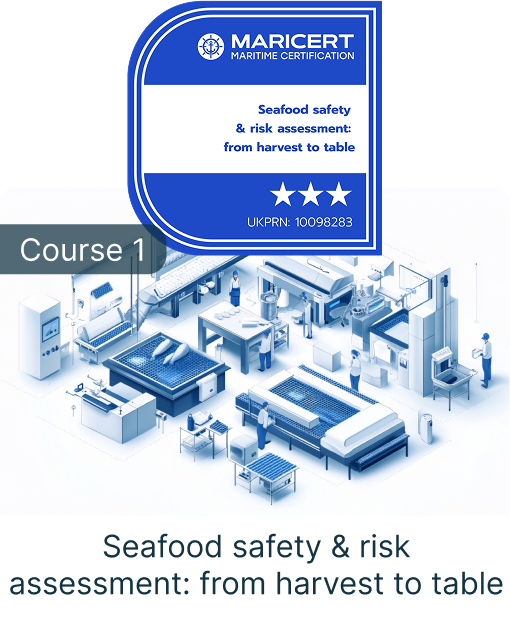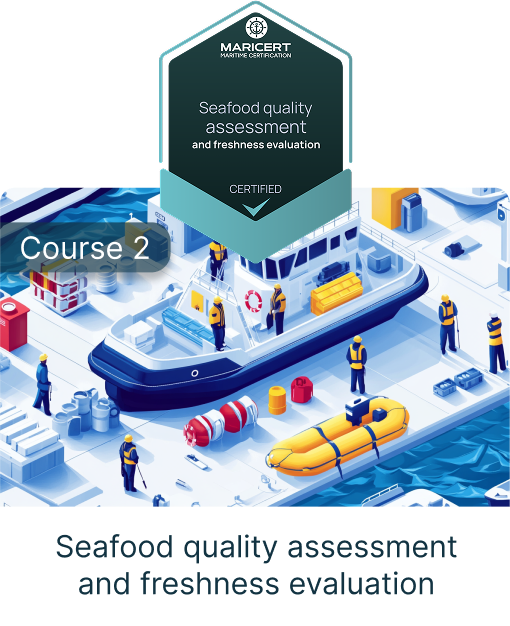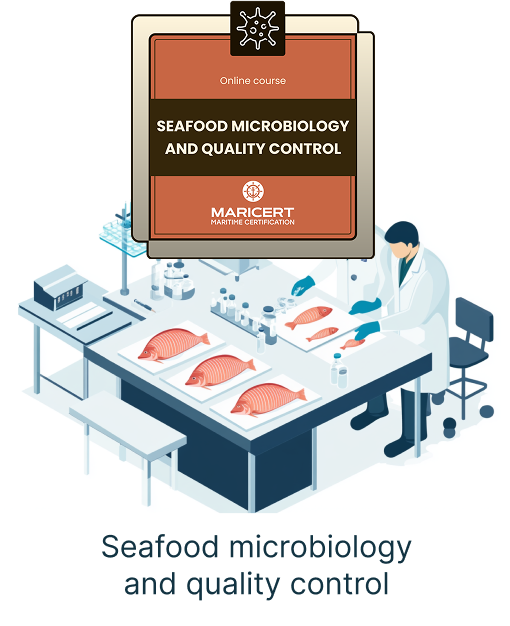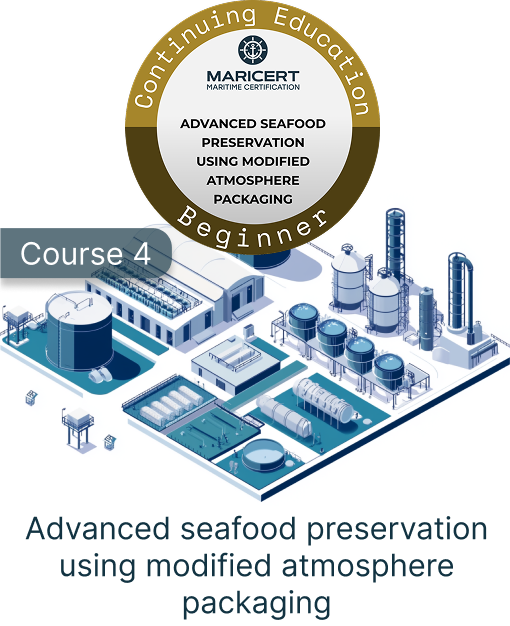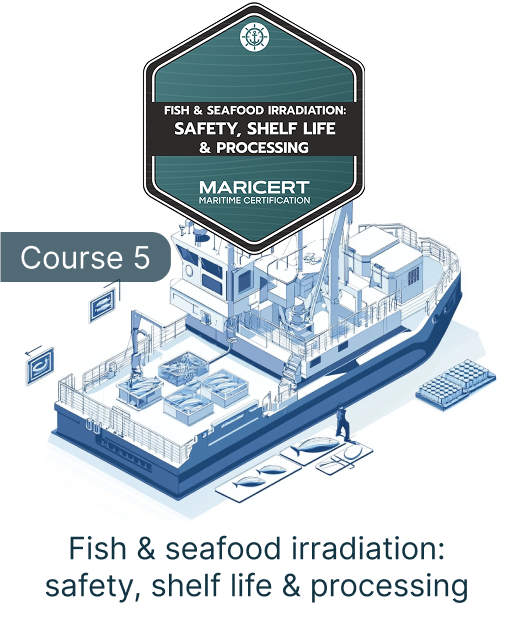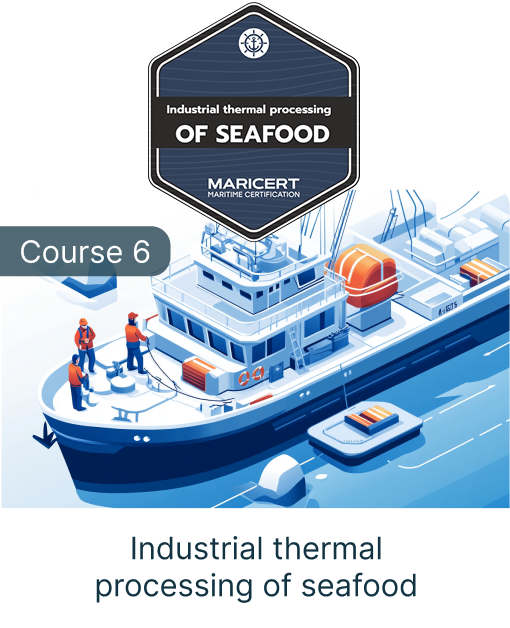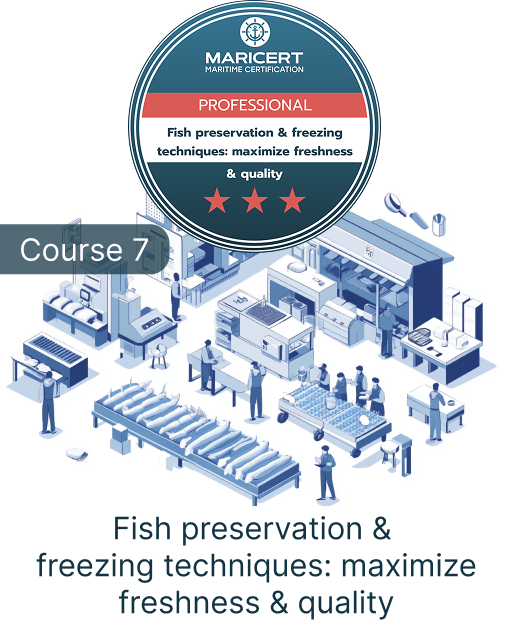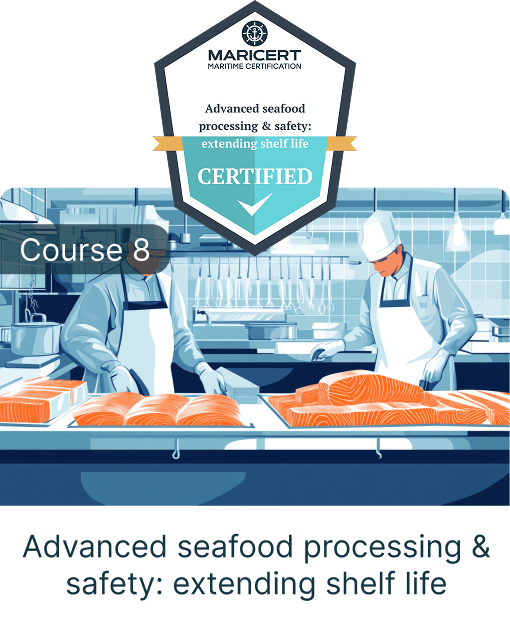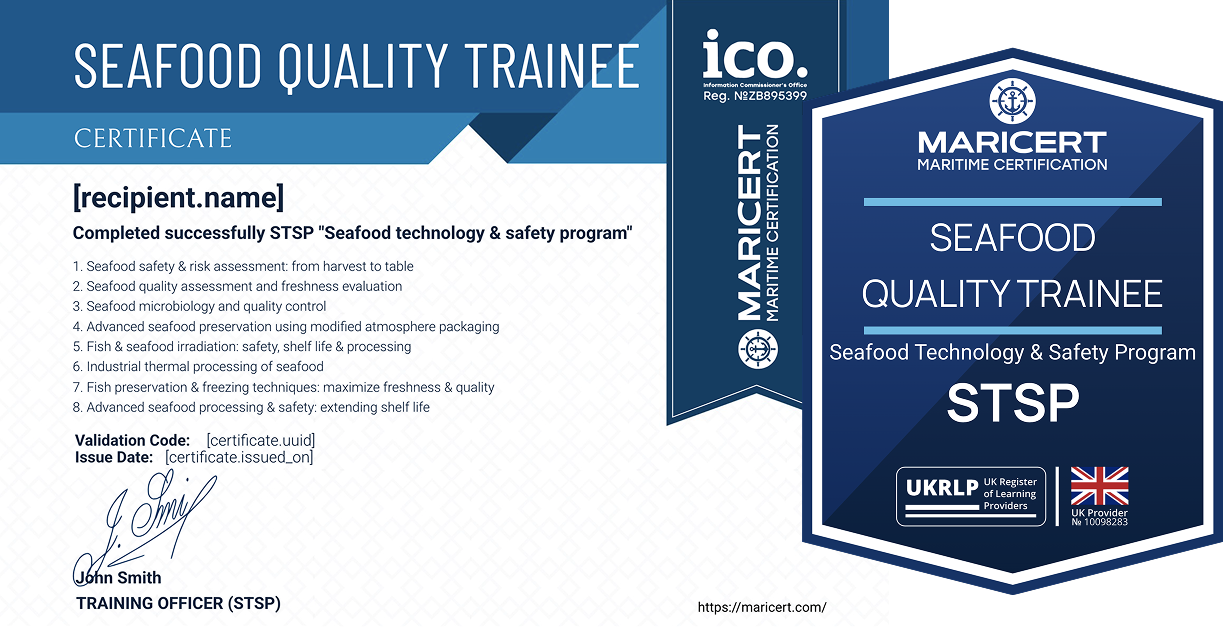Fish preservation & freezing techniques: maximize freshness & quality
LESSONS
- Glossary
- Introduction
- Changes in fish after death during chilled storage
- Protein changes
- Microbial changes
- Formation of ice crystals
- Chemical reactions and enzymatic activity
- Handling and processing onboard fishing vessels
- Transport and wholesale storage
- Cell alive system (CAS) freezing
- Storage life
- References
- Test
- Certificate


Duration
7–9 hours for studying the theoretical material, 2 hours for completing the final test.
Certificate
Upon successful completion of the online course, you will receive a certificate titled:
"Fish preservation & freezing techniques: maximize freshness & quality".
lifetime certificate.
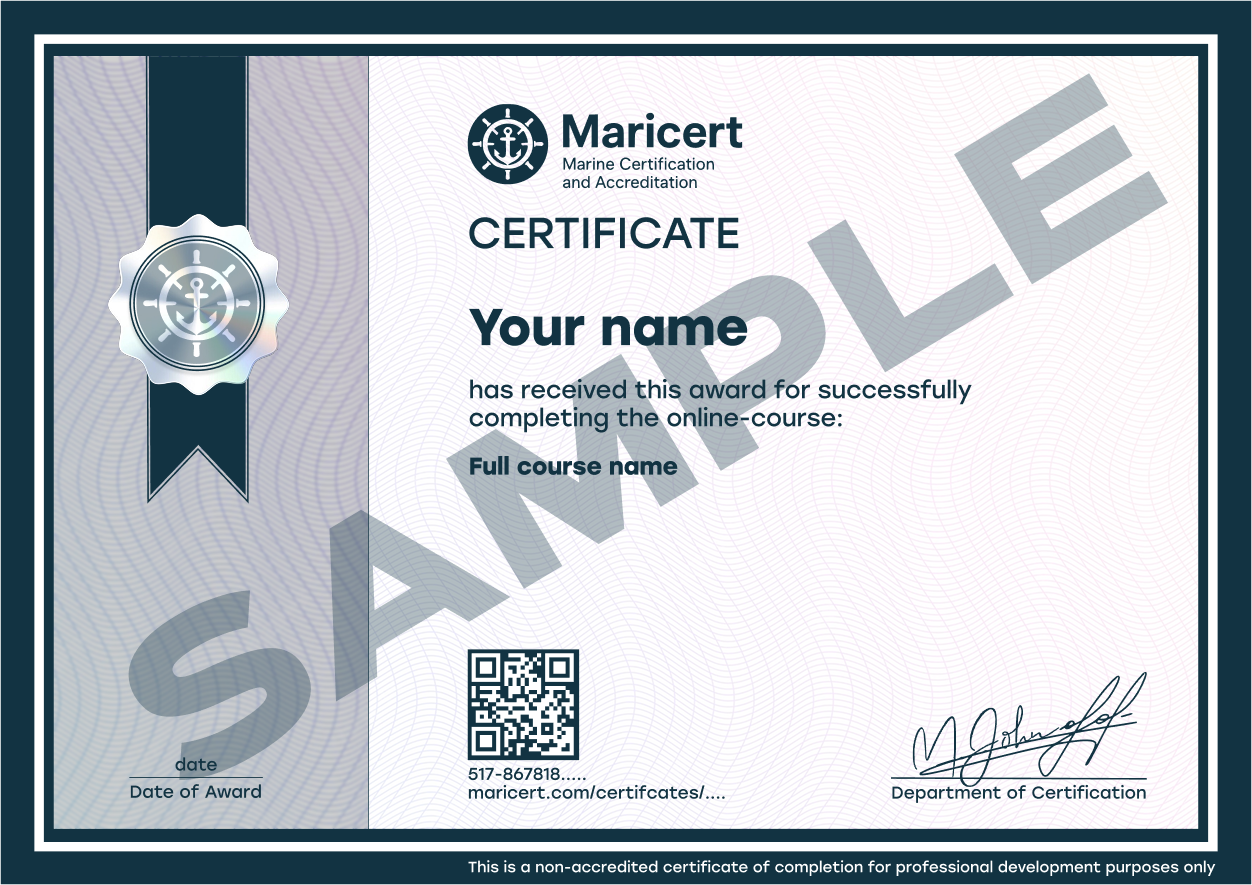

SEAFOOD TECHNOLOGY AND SAFETY PROGRAM
This course is part of the Seafood Technology and Safety Program (STSP). After completing all courses in the program, you’ll be eligible to receive the Seafood Quality Trainee Certificate, officially registered in our verification database. You can share it on social media or add it to your CV to increase your chances of getting hired in the seafood industry — including сrab and fishing fleets, seafood factories, and more.
Course description
This comprehensive course explores the science, technology, and practical techniques behind fish freezing to ensure optimal quality, safety, and longevity. Designed for professionals across the seafood supply chain, the course provides an in-depth understanding of biochemical, microbial, and structural changes that occur during freezing, storage, and thawing. Through real-world examples and scientific insights, you will learn how to maintain the sensory and nutritional attributes of frozen fish products while meeting modern industry standards. From rapid freezing methods and onboard processing to emerging technologies like CAS and PSF, this course equips you with the knowledge and tools to optimize every step of the freezing chain. The content draws on historical practices and current legislation, emphasizing traceability, food safety, and international best practices. Whether you are handling fish at sea or managing cold storage facilities, this course will help you navigate challenges and deliver high-quality products to global markets.
What you’ll learn
- how freezing affects fish texture, moisture, and taste
- the science of rigor mortis, protein degradation, and enzymatic activity
- ice crystal formation and how to control it
- freezing systems: blast, plate, cryogenic, CAS, PSF, impingement
- cold storage best practices and temperature management
- thawing methods and how to prevent thaw rigor
- microbial and lipid changes in frozen fish
- handling, bleeding, and gutting for maximum quality
- international regulations and labeling requirements
- how to preserve high-value fish like salmon and tuna for over a year
Who this course is for
- seafood processors and production managers
- quality control and safety professionals
- fishing vessel crews and cold chain operators
- logistics and storage managers
- aquaculture and fishery entrepreneurs
- food scientists and seafood technologists
- regulatory inspectors and consultants
- students in marine biology and food engineering
FAQ
First, please check your spam or promotions folder — sometimes emails land there. If you still don’t see anything, contact us at https://maricert.com/contact/ — we’ll check your order and grant access as soon as possible.
You can retake the test as many times as needed. There are no penalties or additional fees.
Yes. All lessons and tests are in written format. You can use Google Chrome with auto-translation or third-party tools. Our goal is to make learning accessible to everyone.
Absolutely. The platform is fully optimised for mobile. You can study from your phone, tablet, or laptop — whichever is most convenient for you.
You get 12 months of access from the date of purchase. You can study at your own pace. If the course isn’t completed within that period, access will be revoked without a refund. Refunds are not available once access is granted, as digital content is considered delivered in full (as per the UK Consumer Contracts Regulations 2013).
Your certificate will be sent to your email and also registered in the Certifier.io verification database. You'll receive a PDF version that you can attach to your CV.
Each certificate includes a unique ID and QR code. Employers can verify authenticity via the Certifier database or directly through the Maricert website.
Yes. We recommend including a direct Certifier.io link in your CV, cover letter, or LinkedIn profile to help build trust with employers.
No. Our courses are open to everyone, including beginners. You don’t need any maritime documents to enrol.
They can be added to your CV when applying for jobs on crabbing vessels, fishing fleets, seafood factories, and maritime logistics companies. They’re especially valuable for those with no prior experience.
Yes. While our certificates don’t guarantee a visa, they can serve as additional proof of qualifications when applying for seasonal or work visas.
We are not a recruitment agency, but our certificates and diplomas can improve your chances when applying directly to employers — especially if you’re new to the industry.
Yes. Maricert is officially registered in the UK Register of Learning Providers (UKPRN: 10098283) and complies with ICO (Information Commissioner's Office) data protection regulations.
Yes. You can purchase a course using another person’s email address or contact support to have access transferred after the purchase.

